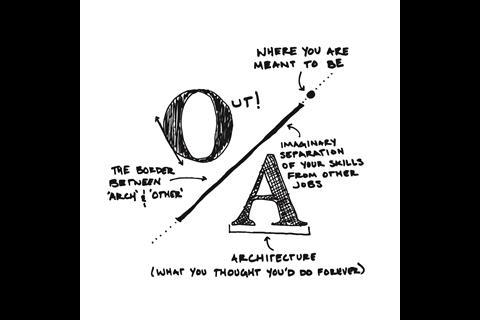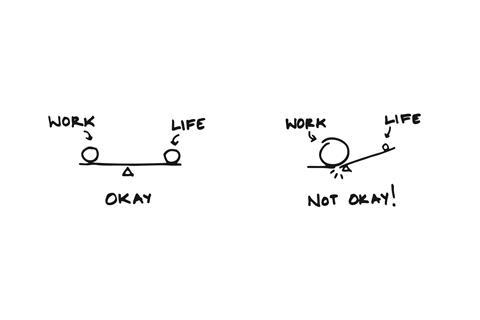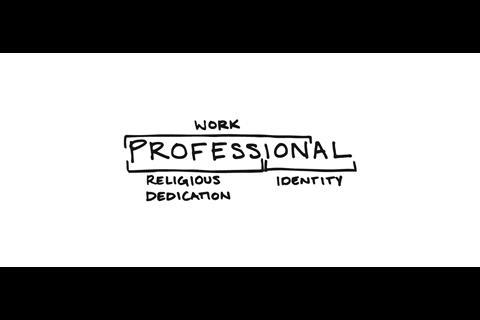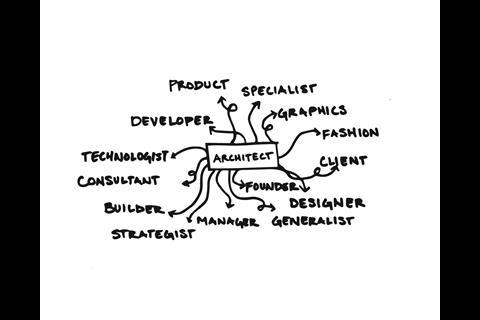[ad_1]
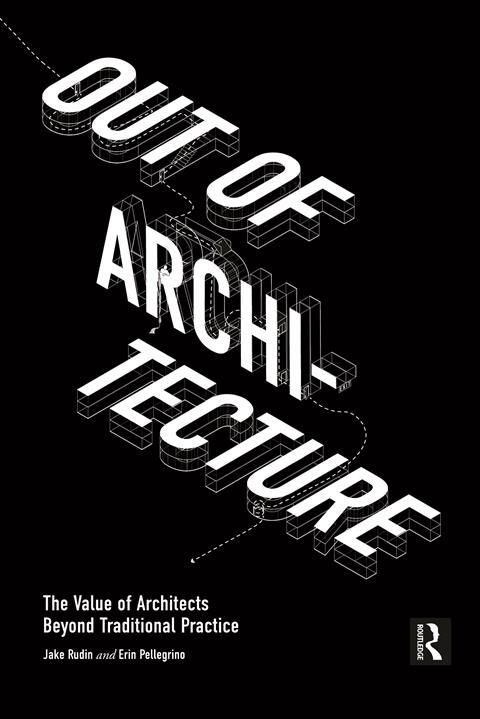
Undervalued. Overworked. Underpaid. You don’t need to look far to find an architect bemoaning the current state of the profession.
Jake Rudin and Erin Pellegrino’s book Out of Architecture responds to these woes, in part by calling for a recalibration of all that is broken in the world of architecture. But also, as the book’s title suggests, by reminding any dissatisfied architect that charting a path out of conventional practice is always an option.
That the skills we develop in both education and work are highly valuable and widely applicable elsewhere. It is worth noting that Rudin and Pellegrino have a homonymous career consultancy, and their experiences and perspective can be felt throughout the book.
The book is split into three sections. The first is an assessment of the maladies that plague the profession.
This includes a compelling and human account of the highs and lows of architectural study and work, beginning with a gruelling studio culture that endows us with a strong work ethic and the ability to learn fast, but also encourages us to pursue our passion no matter the personal or financial cost.
This early experience often leads to exploitation and toxic working cultures that are presented, at best, as a right-of-passage and, at worst, as just a natural part of the job.
This is followed by a diagnosis. The false nature of ‘family’ that we are expected to supplant onto our workplace.
The toxic perfectionism that pervades architecture and prevents brilliantly talented individuals from recognising their value. The deceptive narrative that a passion for your work makes it less valuable rather than more valuable.
Most prominently of all, the stubbornly lingering myth of the lone architectural genius. A myth that ignores the other individuals, architectural and otherwise, that are involved in realising any creative vision, and underplays the role of status and social connections in enabling architects to succeed.
This myth feeds the ego, prevents architects from playing nicely in teams, and encourages the insular and cultish nature of the ‘profession’. At its extreme, it allows those in positions of prominence to take advantage of others, an argument that unfortunately is yet again proving depressingly relevant following the recent allegations of sexual harassment against David Adjaye.
The final section is a series of amalgamated case studies from different stages of an architectural career who have benefitted from Pellegrino and Rudin’s timely interventions. With any book driven primarily by personal experiences, some aspects covered feel very US-specific.
Fortunately, concerns around health insurance and a lack of days off are less applicable this side of the Atlantic. It’s also been over a decade since the RIBA announced that its members must pay their interns or lose chartered status. But the key messages and themes are all painfully relevant and the stories are still compelling and relatable.
At times the writing veers a little close to reading like one continuous advertisement for their career consultancy services. Some of the superfluous details were a little jarring, such as a client receiving such a beautifully presented package of potential employers that he is inspired to dive right into his search.
This is not a disdainful take-down gleefully coaxing architects into giving up their profession
Undoubtedly the promotion of the consultancy was likely a large part of the motivation for the book, however there is no ignoring the clear understanding the authors have of the common complaints in the profession and the potential alternative paths that different disgruntled architects might take.
The quasi-cultish nature of the profession encourages us to strongly identify with our ‘architect’ title. Given the long and difficult path to qualification we are rightly proud of the sense of achievement involved.
This incurs a strong emotional investment that makes it hard to even consider using our skills in a slightly different role. Rudin and Pellegrino acknowledge this difficulty but emphasise the inherent trap in over-identifying with the ‘architect’ title.
As someone who has stepped away from traditional practice myself, I felt plenty of resonance with the frustrations expressed in the book. What captured me most was the clear passion for architecture that is at the heart of the book.
This is not a disdainful take-down gleefully coaxing architects into giving up their profession. Instead, it is a call to celebrate the value that architects have to offer, and how this value can be applied in a whole variety of fields.
This celebration of value is also precisely why we shouldn’t accept the current failings of the architectural profession as a given. We shouldn’t just accept unpaid or underpaid work or unhealthy workplace practices. Everyone deserves a career where they are valued, respected and able to thrive, and architects are no exception to that.
Pellegrino and Rudin do an effective job of shooting down the false argument that the consultancy nature of architecture prevents us from changing. While it is important to acknowledge that no architectural project would exist without a client paying for it, the notion that the clients are entirely resistant to change in architectural practices is exposed as the lazy answer that it is.
While primarily a book for helping frustrated professionals find satisfying careers in the uncharted waters beyond conventional practice, there is still plenty for even the most dedicated architects to digest from this engaging read.
>> Also read: Architecture is a business. So why don’t architects act like business people?
[ad_2]
Source link

